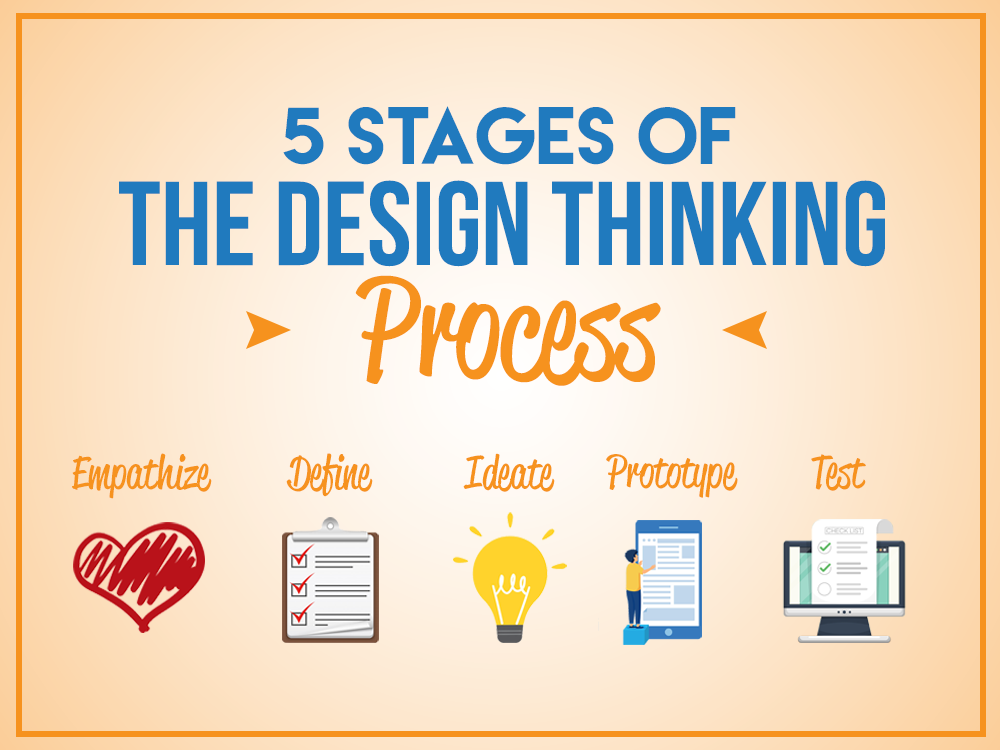Design thinking offers a solution-based approach to solving problems. It can be useful when it comes to taking on complex problems that are unknown or not well defined. There are five stages of the design thinking as proposed by the Hasso-Plattner Institute of Design at Stanford, which is the leading educational institution when it comes to teaching design thinking. Below are the five stages broken down so you can better understand.
Empathize
Stage one requires an empathetic understanding to be developed, relating to the problem needing to be solved. Being empathetic enables design-thinkers to lay aside any preconceived notions or assumptions in order to truly gain insight and meet the needs of users. A substantial amount of information should be gathered, time permitting. This process includes consulting with experts in order to find out information surrounding the area of concern by observing, engaging and empathizing with others to better understand motivations and experiences associated with the matter. It is also necessary to immerse oneself in the physical environment to develop a better understanding on a personal level.
Define
Step two is the define stage, where you piece together a puzzle you have created with the information you obtained during stage one. You can analyze any observations here and synthesize them to define the main problems that have been determined up to now.
Try defining the problem as a need for the company, such as, “We need to seek to deliver more organic based ingredients to meet the growing demand of organic food products among millennials.” This is a better way to define the problem instead of, “Millennials prefer to eat organic food.”
This stage will enable team designers to generate ideas that generate features and functions as well as any other elements necessary in order to seek to resolve problems or, at the very least, minimize the level of difficulty in doing so.
Ideate
Stage three in the design thinking process is when the idea generation begins. Designers have grown in understanding and knowledge of the needs of users as well as analyzed and synthesized all observations in stage two. Now it is time to think outside of the box to look for new solutions to the problem statement created. You can choose from hundreds of ideation techniques. Seek to gain as many ideas or solutions to problems as you can during the beginning of this phase. It may be helpful to choose more than one ideation technique toward the end of this phase to help you investigate and test the ideas you have come up with.
Prototype
In the prototype phase, you will generate a number of scaled down and inexpensive versions of the product to investigate problem solutions created in the stage prior. These prototypes can be shared and tested within just the team or in other departments. These solutions are investigated and may be accepted, improved and re-examined or rejected. By the end of this stage, the design team will have a greater understanding of any constraints related to the project and problems that are present.
Test
Stage five takes place when designers and/or evaluators test the complete product using solutions decided upon during the prototype phase. This is the final stage but there is often an iterative process used to generate results during the testing phase that redefine one or more problems, meaning alterations and refinements may need to be made further in the test phase.

